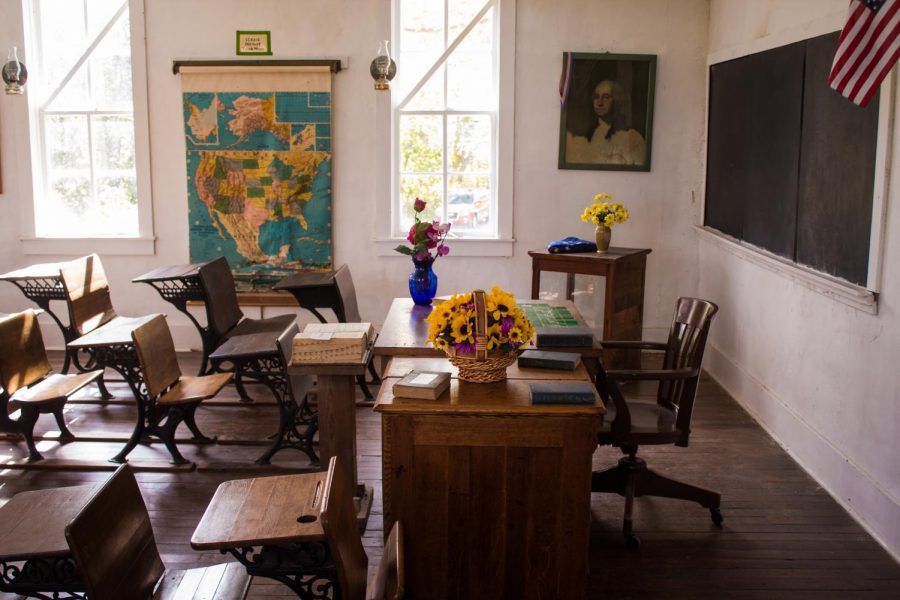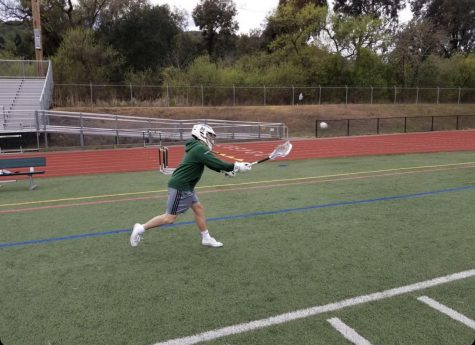In Person Learning Gives More Support to Students
April 16, 2021
Worrying about how they could have finished their project at home, a 3D Art student comes into class with an incomplete project. Instead of being upset that the student didn’t finish their project, 3D Art teacher Gavin Kermode shows the student how to use the machines in the workshop, allowing the student to complete the project more efficiently than if they were at home.
March 16, students went to school in-person for the first time since March 12, 2020. For a majority of the 2020-21 school year, students had to ask for help from teachers online. Fortunately, students returning to hybrid find classroom support more accessible..
“It’s much easier to get help because we can access teachers right away, rather than send an email or wait to find a convenient time to meet on Zoom,” senior Lucy Marken said.
The in-person interactions also help teachers know that their aid is much more helpful to students through cues such as eye contact and body language. “I think what’s helpful is that in person, you can make eye contact with students, you can have a full conversation with them where you know they’re not texting or something,” AP US History teacher Jackson Avery said.
Along with the availability of teachers, the face-to-face conversation helps Advanced Placement (AP) students prepare for the highly anticipated AP tests in May. Teachers can give students more personalized help and encourage more interactive learning. “I personally feel that the transition to hybrid has both drawbacks and benefits in terms of preparing for AP tests. I think hybrid schooling is a better form of learning than distance learning, so hopefully in class review for the AP tests will better prepare students for the tests to come. At the same time, the confusion of the transition to hybrid schooling is very overwhelming to students and has perhaps even impacted teachers’ schedules for AP tests review,” junior Giri Mase.
On the other hand, some students believe that the shift to hybrid learning hasn’t affected them significantly. Since many teachers have different styles of teaching in hybrid, some students don’t have easy access to their teachers. “Compared to full distance learning, I would say that hybrid learning is better, but not great. Generally because teachers’ attention is split between people in class and on Zoom. So they are more engaged but it isn’t infinitely better,” freshman Tyler Akel said.
Teachers have also noticed that some students are more hesitant to ask for help in person. “One of the things that’s difficult is for students to stay back after class, because it’s a very public thing to do in person. On Zoom, I actually found it much easier for students to stay back after class when everybody is [leaving] at the same time. So in that realm, it’s a little bit more difficult. I found that giving support to students in person is much more effective, but it’s harder to actually get that conversation going in the first place,” Avery said.
Some teachers continue to teach in class and over Zoom synchronously, while others prefer to assign asynchronous work for students on Zoom. With their focus placed on one group of students, certain teachers can still establish a more interactive learning environment with their class.
“It is much easier to get help from teachers during hybrid schooling because it is easier to ask questions and to reach out to teachers. Over Zoom, it always felt slightly odd having to constantly email and go to online academies on Zoom. Now, there is a much more personal feel to teacher-student interactions,” Mase said.
As the student walks into their next class with a finished 3D Art project in their hand, they see their physics teachers giving a physical demonstration of rotational momentum using a bicycle wheel, something they could not do over distance learning.








